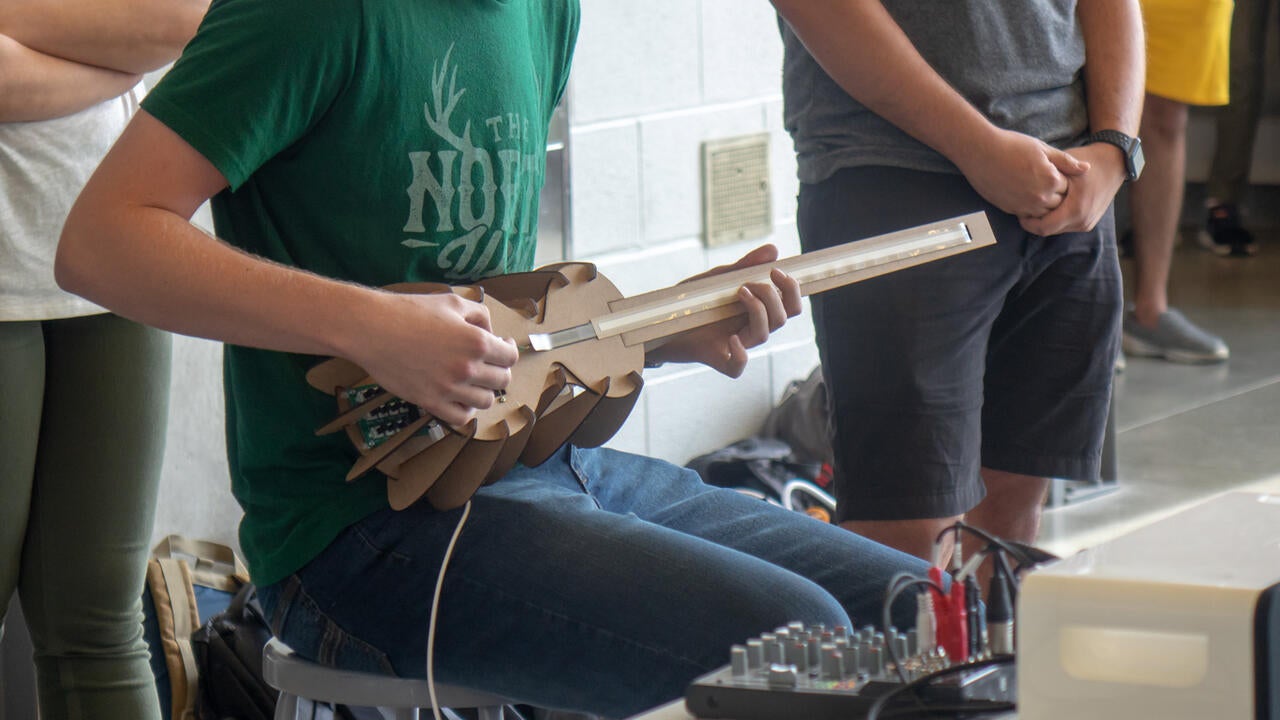
Striking a chord with electronic takes on classic instruments
From plywood sitars to electronic tap-shoes, reimagined instruments draw from students’ own cultures

From plywood sitars to electronic tap-shoes, reimagined instruments draw from students’ own cultures
By Devon Bradwell University RelationsFor many students, a term project can evoke a lot of emotions, such as excitement, worry, and enthusiasm; but for one class it provided an opportunity to reconnect with their own cultures. Last Friday, more than 80 students taking SYDE 361 staged a memorable concert featuring electronic instruments that they designed and built.
Matt Borland, a lecturer in the Department of Systems Design Engineering at the University of Waterloo, assigned his students to create new electronic musical instruments, and ones not based on western instruments. As a result, several students looked to their own heritages for inspiration.
One group designed a Balinese gamelan, a mallet-based instrument, similar to a xylophone. The students enlisted help of I Dewa Made Suparta, a musician and teacher from Bali specializing in the gamelan at Conrad Grebel University College.
“I’m Indonesian myself, so my group’s decision to make a gamelan was really cool,” said Nicholas Sia, a third-year engineering student.
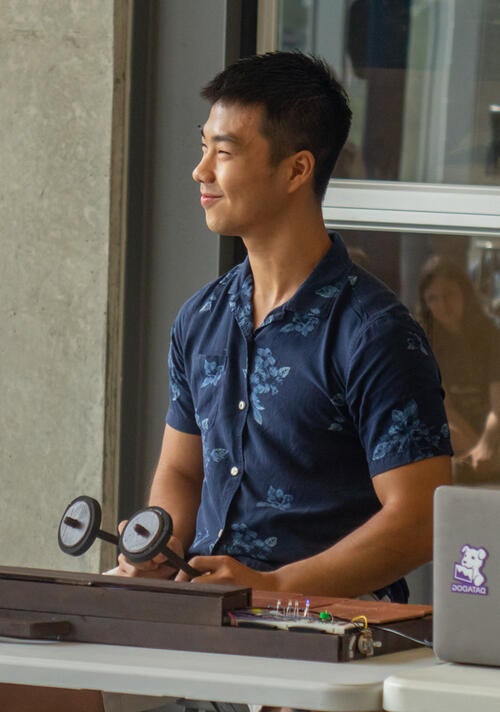
Nicholas Sia performing a piece of music on a redesigned gamelan
“It gave me a chance to learn about my own culture while I’m studying in Canada, which isn’t something too many students get to do, especially in this more hands-on sort of way.”
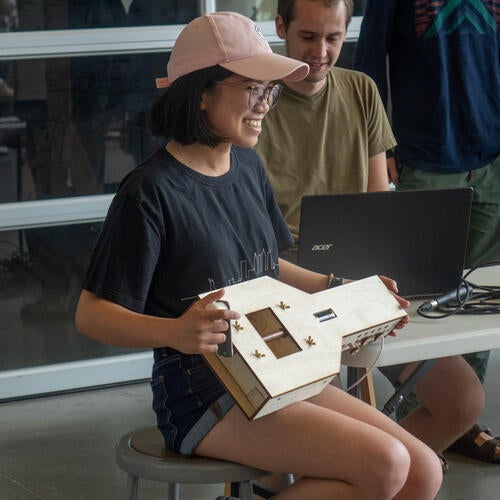
Alena Delena demonstrates her team's hurdy-gurdy
The projects took an entire term to complete, and required technical skill, but also researching, selecting and designing the instrument of choice. Other groups reached out to other musicians in Waterloo region for help with their designs. Alena Delena’s group designed an electronic hurdy-gurdy, a stringed instrument that uses a hand-turned crank. Their source of information was a local musician who came to Waterloo from Europe.
“Our instrument must have gone through a dozen iterations, just from the user-testing feedback alone,” said Andy Park, with a laugh. Park’s group had just finished demoing their improved tap-shoes design. “It’s an important part of systems, right? You have to bake that human element into every design, otherwise it just won’t work.”
After rigorously designing, user-testing and redesigning, the 13 groups of students had working prototypes of their instruments ready for the stage. At the big show, the audience cheered and applauded when things went well, and shared a laugh with the performers when there were technical hiccups. The event closed out with an improvised performance of Mary Had A Little Lamb from two of the groups, as the audience laughed and clapped along.
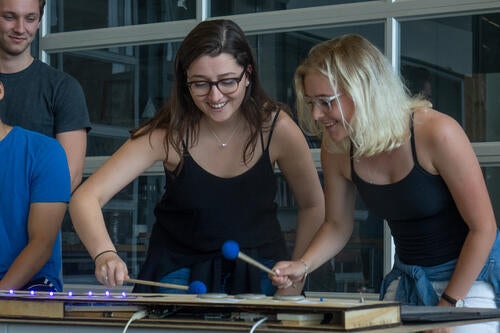
Stephanie Carras (left) and Dylan Conway (right) work together to demo their instrument
While Borland’s students find creating musical instruments to be a lot of fun, they recognize the purpose of what they’re doing—to understand the importance of pairing systems with human connection. “Human interaction is a huge part of systems design, and the students know that,” said Borland. “The challenge of this project isn’t just to create an electronic instrument, it’s to create an instrument that can combine the complex human aspects of music with systems design engineering, and get an emotional response from the audience. That’s what music is really about, and that’s what we’re trying to do.”

Read more
Here are the people and events behind some of this year’s most compelling Waterloo stories

Read more
Waterloo Engineering alum wears her iron ring proudly while building her career in quantum tech in Germany
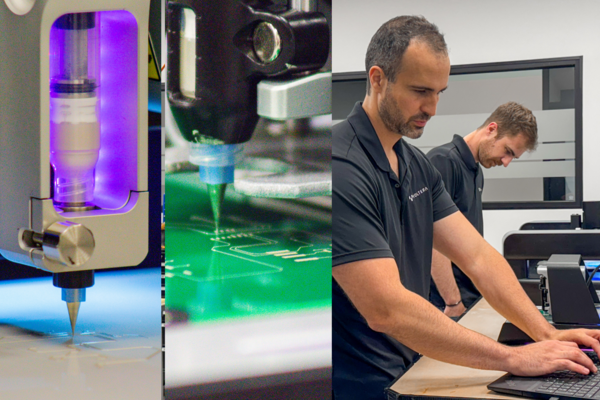
Read more
Voltera prints electronics making prototyping faster and more affordable — accelerating research to market-ready solutions
The University of Waterloo acknowledges that much of our work takes place on the traditional territory of the Neutral, Anishinaabeg, and Haudenosaunee peoples. Our main campus is situated on the Haldimand Tract, the land granted to the Six Nations that includes six miles on each side of the Grand River. Our active work toward reconciliation takes place across our campuses through research, learning, teaching, and community building, and is co-ordinated within the Office of Indigenous Relations.